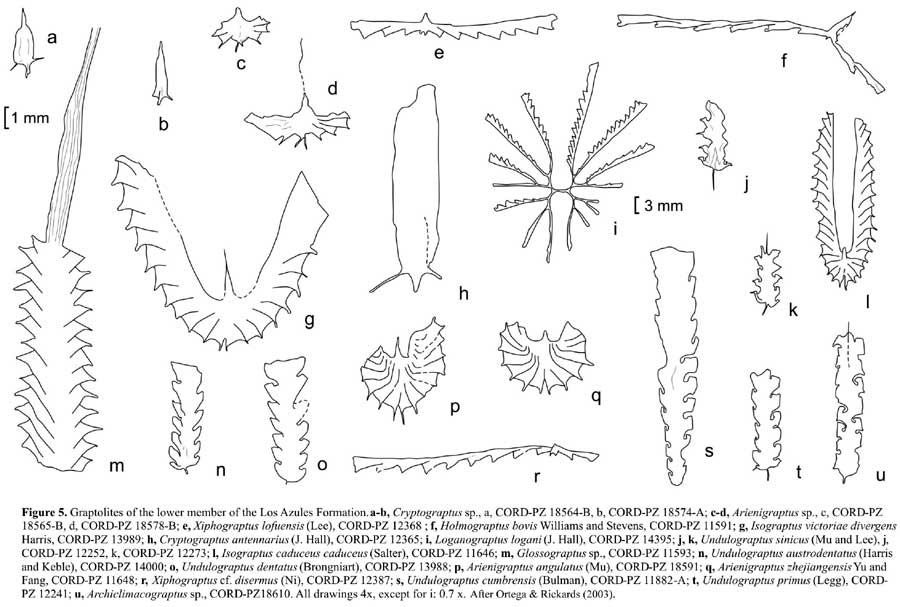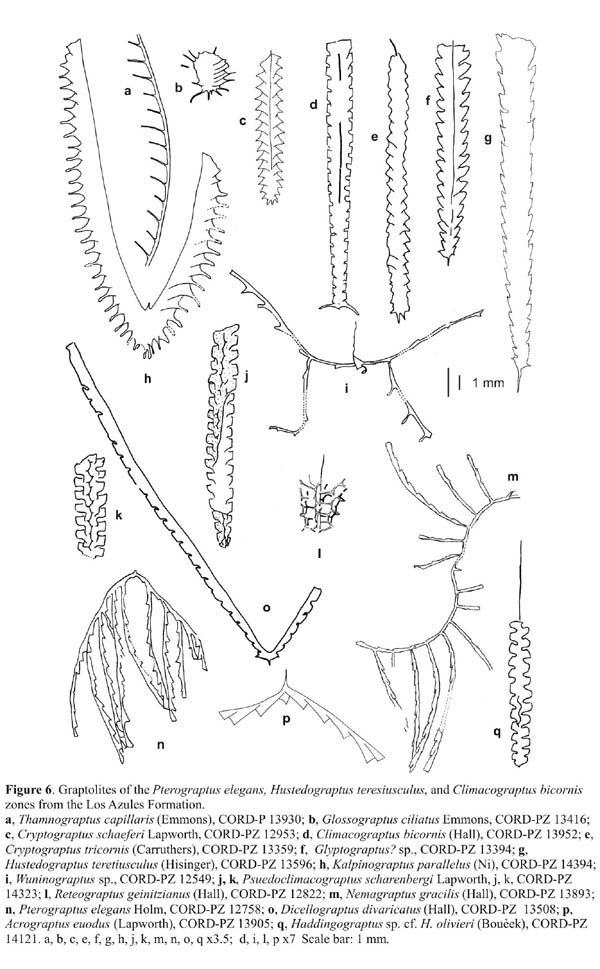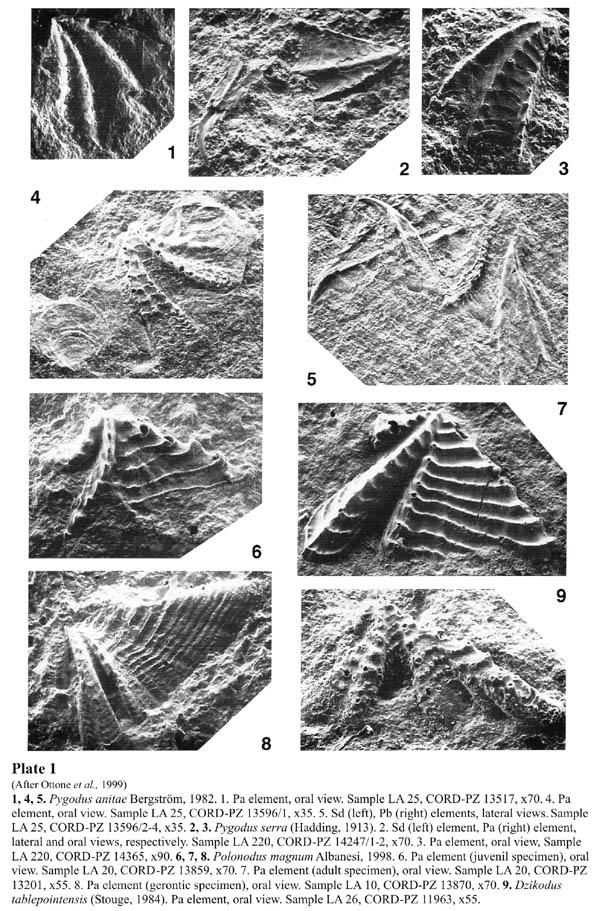Los Azules Formation, Cerro Viejo, Huaco, Precordillera of
San Juan Province
Gladys Ortega1
and Guillermo L. Albanesi1
1CONICET
– Museo de Paleontología, Universidad Nacional de Córdoba, Casilla de Correo 1598,
5000 Córdoba, Argentina. E–mail: gcortega@arnet.com.ar /
galbanes@com.uncor.edu
Introduction
The Ordovician black shales of the Cerro Viejo
of Huaco were originally mentioned by Borrello & Gareca (1951), who reported
Nemagraptus gracilis in its upper part. The succession was known by different
names in the geological literature (Harrington & Leanza, 1957; Turner, 1960)
until Cuerda & Furque (1975), who referred it to the Los Azules Formation,
and considered a Llanvirn to Caradoc age. The unit crops out on the western
flank of the Cerro Viejo, between 30º 11’ 40" and 30º 15’ 30" S Latitude,
and 68º 34’30" and 68º 35’20" W Longitude, in the Central Precordillera,
San Juan Province (Figure 1).
The Los Azules Shale is composed of three members
informally named as lower, middle and upper members, cropping out in many sections
on the western flank of the Cerro Viejo anticline (Ortega, 1987) (Figures 2,
3). The lower member (ca. 6 m thick) is made up of silicified black shales
and K–bentonite levels, which conformably overlie the San Juan Limestone. A
rich graptolite fauna occurs. It was originally assigned to the Paraglossograptus
tentaculatus Zone (Alfaro & Cuerda, 1986; Ortega, 1995) and subsequently
to the Undulograptus austrodentatus (Darriwilian Da1) and Undulograptus
dentatus (Da2) zones (Mitchell et al., 1998). Recently, Undulograptus
dentatus and Holmograptus lentus zones were identified in the lower
member (Brussa et al., 2003; Ortega & Brussa, 2003).
A study of the K–bentonites of the Cerro Viejo
succession infers an isotopic age of approximately 464 Ma for the lower levels
of the Los Azules Formation (Huff et al., 1997).
These strata are covered by brownish micaceous
sandstones of variable thickness, and succeeded by grey siltstones and thin
K–bentonites layers of the middle member. This member is ca. 220 m thick
at the El Nido creek and ca. 95 m thick at the Los Azules creek. In these
deposits the Pterograptus elegans, probably, Pseudamplexograptus distichus,
and Hustedograptus teretiusculus zones (Darriwilian Da4) (Ortega, 1987;
Ortega & Rickards, 2003; Brussa et al., 2003) were recognized. The
basal micaceous sandstone yielded conodonts of the Pygodus anitae Subzone
(Eoplacognathus suecicus Zone) (Ottone et al., 1999). A lower
palynological assemblage (LAL) composed main by acritarchs and chitinozoans
were also described for this member (Ottone et al., 1999, 2001).
The upper member (ca. 20 m thick) comprises
calcareous siltstones and subordinate mudstone lenses. It is only recognized
in the Los Azules, Amarilla, and Árbol Seco creeks. The graptolite fauna correspond
to the Climacograptus bicornis Zone (Gisbornian, Gi2) and it is associated
with conodonts of the Amorphognathus tvaerensis Zone (Ottone et al.,
1999). An upper palynological assemblage (LAU) integrated by acritarchs and
profusely ornamented chitinozoans, was identified in these levels (Ottone et
al., 1999; 2001).
A stratigraphic gap is present between the middle
and upper members embracing the N. gracilis Zone interval, and possibly
the uppermost part of the H. teretiusculus Zone. The Los Azules Formation
is unconformably overlain by Carboniferous strata of the Guandacol Formation.
Stop 1. Los Gatos creek
The succession of the Los Azules Formation at
Los Gatos creek is incomplete. The lower member and part of the middle member
of the formation, which is unconformably covered by the Carboniferous deposits
(Guandacol Formation), are exposed.
A rich graptolite fauna including Loganograptus
logani (Hall), Pseudobryograptus parallelus Mu, Pseudotrigonograptus
ensiformis (Hall), Tetragraptus bigsbyi (Hall), T. serra (Brongniart),
T. reclinatus Elles & Wood, T. headi (Hall), T. quadribrachiatus
(Hall), Xiphograptus lofuensis (Lee), Holmograptus bovis Williams
& Stevens, Holmograptus sp. nov., Acrograptus sp., Glossograptus
acanthus Elles & Wood, Glossograptus sp., Paraglossograptus
tentaculatus (Hall), P. tricornis Mu, Geh & Yin, Cryptograptus
antennarius (Hall), Arienigraptus zhejiangensis Yu & Fang,
Isograptus victoriae divergens Harris, I. caduceus caduceus Salter,
Undulograptus austrodentatus (Harris & Keble), U. sinicus (Mu
& Lee), U. dentatus (Brongniart), U. primus (Legg), and
U. cumbrensis (Bulman) occurs in the basal part of the lower member of the
Los Azules Formation (Figure 4, 5). Most of these graptolites were recorded
in the lower part of the Gualcamayo Formation, northern Precordillera (Ortega
& Albanesi, 1999).
Approximately 0.60 m above the base of the member,
Arienigraptus angulatus (Mu) and Arienigraptus sp. make
their appearance. Some forms, such as I. v. divergens are restricted
to the base of the unit, while others, e.g. T. headi, are just
localized in the middle part of the lower member. A. zhejiangensis, A.
angulatus and U. dentatus range upwards throughout the middle part
of the member but they were not recorded in our collections from the uppermost
strata.
This graptolite assemblage was referred to the
U. dentatus Zone in accordance with the presence of the nominal species,
and A. angulatus and Arienigraptus sp. It correlates with the
U. dentatus Zone of the North America (Maletz, 1997b) and the Undulograptus
intersitus Zone of Australasia (VandenBerg & Cooper, 1992).
In the upper part of the lower member, a thick
K–bentonite bed (ca. 0.50 m) contains Pseudobryograptus sp. (proximal
ends and young colonies), P. ensiformis, Tetragraptus sp. (a reclinated
form), X. lofuensis, X. cf. disermus, Brachiograptus etaformis,
I.. c. caduceus, A. angulatus, Arienigraptus sp., Glossograptus
sp., P. tentaculatus, Cryptograptus sp. (siculae and early stages),
and U. primus. The appearance of Archiclimacograptus, Haddingograptus
and Hustedograptus allow reference to the Holmograptus
lentus Zone (upper Da2), following the scheme of Maletz (1995) (see Brussa
et al., 2003; Ortega & Rickards, 2003).
In the Precordillera, a similar assemblage was
studied in the Corridita creek, to the north of the Cerro Viejo area (Máspero
Castro et al., 2003), where scarce rhabdosomes of H. lentus were
found in the middle member of the Gualcamayo Formation.
We do not have the definitive fauna of Da3 age,
equivalent to the Nicholsonograptus fasciculatus Zone of Scandinavia
and North America (Maletz, 1995; 1997a, b) or Diplograptus? decoratus
of Australasia (VandenBerg & Cooper, 1992). It is possible that rocks of
this age are not represented in the Cerro Viejo area. If that is the case, a
hiatus might be present between the lower and middle members of the Los Azules
Formation.
The basal coarse sandstone of the middle member
bears conodonts, inarticulate brachiopods uniserial stipes and biserial graptolite
remains. Immediately above this sandstone we record the entrance of Pterograptus
elegans Holm, Acrograptus euodus (Lapworth), Kalpinograptus parallelus
(Ni) and Wuninograptus sp., associated to Reteograptus
geinitzianus (Hall), C. schaeferi Lapworth, and biserial graptolites
(e.g. Archiclimacograptus, Haddingograptus, Hustedograptus, and Eoglyptograptus)
which become more abundant constituents of the fauna (Figure 6). This graptolite
assemblage was assigned to the P. elegans Zone, late Darriwilian (Da4a)
in age (Ortega, 1995). Equivalent faunas were described in the Potrerillo range
and the Corridita creek, northern Precordillera (Ortega & Albanesi, 2000;
Máspero Castro et al., 2003).
The occurrence of Drepanodus robustus
Hadding, Paroistodus horridus (Barnes & Poplawski), Periodon aculeatus
Hadding, Polonodus tablepointensis (Stouge), Polonodus sp.
A of Albanesi, Protopanderodus robustus (Hadding), Pygodus anitae
Bergström, and Spinodus spinatus (Hadding) as casts on bedding plane
surfaces, in the lower 20 m of the middle member, indicates the presence of
the Pygodus anitae Subzone (Eoplacognathus suecicus Zone) for
the bearer strata (Ottone et al., 1999) (Plate 1). The conodont assemblage
represents the Periodon–Pygodus biofacies that characterizes deep–cold
waters slope environments (Albanesi & Ortega, 1998).
The graptolite fauna of the lower member of
the Los Azules Formation corresponds to the isograptid biofacies (Cooper et
al., 1991) of noteworthy Pacific affinity. The graptolite assemblage of
the middle member is dominated by biserial rhabdosomes, gradually increases
pandemic forms, and incorporates some Baltic elements.
Stop 2. Los Azules creek
This is the classic locality of the Los Azules
Formation. A complete sequence of this formation crops out therein; it includes
the lower, middle, and upper members (early Darriwilian Da2 to early Gisbornian
Gi2) (Figure 3).
The lower member and the lower part of the middle
member contain the graptolite assemblages mentioned for the Los Gatos creek
(U. dentatus, H. lentus, P. elegans, and probably P. distichus
zones).
In the upper part of the middle member graptolites
dominated by biserial rhabdosomes were referred to the Hustedograptus teretiusculus
Zone (Ortega, 1987). The assemblage is composed by Thamnograptus sp.,
Acrograptus euodus (Lapworth), Reteograptus geinitzianus (Hall),,
Cryptograptus schaeferi Lapworth, Glossograptus sp., Hustedograptus
teretiusculus (Hisinger), H. vikarbyensis (Jaanusson), Hustedograptus
sp., Gymnograptus sp., and Haddingograptus sp. cf. H. olivieri
(Boucek) (Figure 6). Same levels yielded conodonts of the Pygodus serra Zone.
The mentioned fauna is assigned to a late Llanvirn age (late Darriwilian Da4)
(Ortega, 1987, 1995).
In the El Nido creek, located few kilometers
to the south of the Los Azules creek, the higher strata of the middle member
are exposed. The sequence contains Nemagraptus sp. cf. N. subtilis
Hadding, Dicellograptus sp., H. teretiusculus, Orthograptus sp.,
conodonts of the Pygodus serra Zone, and the lower palynological assemblage
(LAL) (Ottone et al., 1999, 2001).
The upper member of the Los Azules Formation
paraconformably overlies the middle member. In the Los Azules creek the upper
member is ca. 20 m thick. Graptolites of the Climacograptus bicornis
Zone are associated to trilobites (Porterfieldia jachalensis Harrington
& Leanza, and Guandacolithus sp. aff. G. furquei Harrington
& Leanza) and conodonts of the Amorphognathus tvaerensis Zone, indicating
an early Caradoc age for the bearer strata. A palynological assemblage (LAU)
dominated by chitinozoans is present in these layers (Ottone et al.,
1999, 2001).
The graptolite fauna is integrated by Aspidograptus
sp., Callograptus sp., Dictyonema sp., Ptilograptus sp.
cf. P. delicatulus Ruedemann, Thamnograptus capillaris (Emmons),
Acrograptus euodus, Reteograptus geinitzianus, Glossograptus ciliatus
Emmons, Cryptograptus tricornis (Carruthers), Nemagraptus gracilis
(Hall), Dicellograptus salopiensis Elles & Wood, Dicellograptus
divaricatus (Hall), Dicellograptus sp., Dicranograptus nicholsoni
Hopkinson, Psudoclimacograptus scharenbergi Lapworth, Climacograptus
bicornis (Hall), Orthograptus ex gr. calcaratus (Lapworth),
and Glyptograptus? sp.
In calcirudite, the presence of Amorphognathus
tvaerensis Bergström, Baltoniodus variabilis (Bergström), Drepanoistodus
suberectus (Branson & Mehl), Panderodus gracilis (Branson &
Mehl), Periodon aculeatus Hadding, Pragmodus undatus Branson &
Mehl, Protopanderodus varicostatus (Sweet & Bergström), and Scabbardella
altipes (Henningsmoen), among others, was recorded (Ortega & Albanesi,
1998).
References
Albanesi, G.L. & Ortega, G. 1998. La biofacies
Periodon–Pygodus (Conodonta) en las secuencias euxínicas del Ordovícico
de la Precordillera Argentina. VIII Congreso Argentino de Paleontología y
Bioestratigrafía. Resumen: 79.
Alfaro, M. & Cuerda, A.J. 1986. Paraglossograptus
tentaculatus (Hall) (Graptolithina) en el Ordovícico de la Precordillera.
Ameghiniana, 22: 213–219.
Borrello, A.V. & Gareca, P.G. 1951. Sobre
la presencia de Nemagraptus gracilis (Hall) en el Ordovícico del norte
de San Juan. Revista de la Asociación Geológica Argentina, 6: 187–198.
Brussa, E.D., Mitchell, C.E.,
Ortega, G., Maletz, J. & Astini, R.A. 2003. Middle Ordovician graptolite
biostratigraphy from the Los Azules Formation at Los Gatos creek, Central
Precordillera, Argentina. Proceedings of the 7th
International Graptolite Conference, San
Juan, Argentina, Serie de Correlación Geológica, 18.
Cooper, R.A., Fortey, R.A. & Lindholm,
K. 1991. Latitudinal and depth zonation of early Ordovician graptolites. Lethaia,
24: 199–218.
Cuerda, A.J. & Furque, G. 1975. Nuevos
datos sobre la paleobiogeografía de la Formación Gualcamayo, Ordovícico de
la Precordillera. Actas Primer Congreso Argentino de Paleontología y Bioestratigrafía,
Tucumán, I: 49–58.
Harrington, H.J. & Leanza, A.F. 1957.
Ordovician Trilobites of Argentina. University Kansas Press, Special
Publication 1: 1–276.
Huff, W.D, Davis, D., Bergström, S.M., Krekeler,
M.P.S., Kolata, D.R. & Cingolani, C. 1997. A biostratigraphically well–constrained
K–bentonite U–Pb zircon age of the lowermost Darriwilian Stage (Middle Ordovician)
from the Argentine Precordillera. Episodes, 20: 29–33.
Maletz, J. 1995. The Middle Ordovician (Llanvirn)
graptolite succession of the Albjära core (Scania, Sweden) and its implication
for a revised biozonation. Zeitschrift für geologische Wissenschaften,
23: 249–259.
Maletz, J. 1997a. Graptolites from the Nicholsonograptus
fasciculatus and Pterograptus elegans Zones (Abereiddian, Ordovician)
of the Oslo region, Norway. Greifswalder Geowissenschaftliche Beiträge,
4: 5–98.
Maletz, J. 1997b. Arenig biostratigraphy of
the Point–de–Lévy slice, Quebec Appalachians, Canada. Canadian Journal
of the Earth Sciences, 34: 733:752.
Máspero Castro, B. & Ortega,
G. 2003. Middle Ordovician graptolite fauna of the Gualcamayo Formation (middle
member) at the Corridita creek, northern Precordillera, Argentina. Proceedings
of the 7th International
Graptolite Conference, San Juan, Argentina,
Serie de Correlación Geológica, 18.
Mitchell, C.E., Brussa, E.D.
& Astini, R.A. 1998. A diverse Da2 fauna preserved within an altered volcanic
ash fall, Eastern Precordillera, Argentina: implications for graptolite paleoecology.
In: Gutiérrez Marco, J.C. & Rábano, I. (Eds.). Proceedings 6th
International Graptolite Conference (GWG–IPA)
& 1998 Field Meeting, IUGS Subcommission on Silurian Stratigraphy,
Madrid, Temas Geológico–Mineros ITGE, 23: 222–223.
Ortega, G. 1987. Las graptofaunas y los
conodontes de la Formación Los Azules, cerro Viejo, zona de Huaco, Departamento
Jáchal, San Juan. Tesis doctoral, Facultad de Ciencias Exactas, Físicas
y Naturales, Universidad Nacional de Córdoba (unpublished)
Ortega, G. 1995. Graptolite
zones of the Los Azules Formation (Middle Ordovician) from Precordillera,
western Argentina. 5th
International Graptolite Conference, Graptolite Working Group, International
Palaeontology Association, Graptolite News, Long Beach, California, 8:
57–59.
Ortega, G. & Albanesi,
G.L. 1998. The record of the Nemagraptus gracilis Zone in the Argentine
Precordillera. In: Gutiérrez Marco, J.C. & Rábano, I. (Eds.). Proceedings
6th International Graptolite
Conference (GWG–IPA) & 1998 Field
Meeting, IUGS Subcommission on Silurian Stratigraphy, Madrid, Temas
Geológico–Mineros ITGE, 23: 231–235.
Ortega, G. & Albanesi, G.L. 1999. Gaptolite
biostratigraphy of the Gualcamayo Formation (Middle Ordovician) at the Los
Sapitos creek section, Argentine Precordillera. Acta Universitatis Carolinae,
Geologica, 43:49-52.
Ortega, G. & Albanesi, G.L. 2000 Graptolitos
de la Formación Gualcamayo (Ordovícico Medio) en el cerro Potrerillo, Precordillera
Central de San Juan, Argentina. Boletín de la Academia Nacional de Ciencias,
Córdoba, 64: 27–59.
Ortega, G. & Rickards,
R.B. 2003. A Darriwilian (Middle Ordovician) graptolite fauna of the lower
member of the Los Azules Formation, Cerro Viejo, San Juan Precordillera, Argentina.
Proceedings of the 7th
International Graptolite Conference, San
Juan, Argentina, Serie de Correlación Geológica, 18.
Ottone, E.G., Albanesi, G.L., Ortega, G. &
Holfeltz, G. 1999. Palynomorphs, conodonts and associated graptolites from
the Ordovician Los Azules Formation, Central Precordillera, Argentina. Micropaleontology,
45: 225–250.
Ottone, E.G., Holfeltz, G., Albanesi, G.L.
& Ortega, G. 2001. Chitinozoans from the Ordovician Los Azules Formation,
Central Precordillera, Argentina. Micropaleontology, 47: 97–110.
Turner, J.C. 1960. Faunas graptolíticas de
América del Sur. Revista de la Asociación Geológica Argentina, 14 (1–2):
5–180.
VandenBerg, A.H.M. and Cooper, R.A. 1992.
The Ordovician graptolite sequence of Australasia. Alcheringa, 16 (1):
33–85.
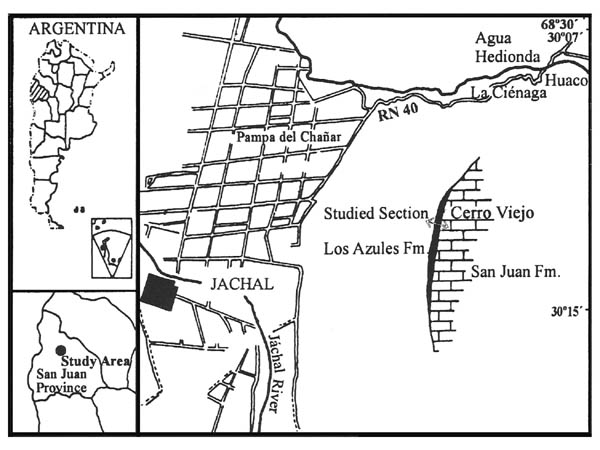
Figure 1. Location map of the Cerro Viejo
area (after Ottone et al., 2001).
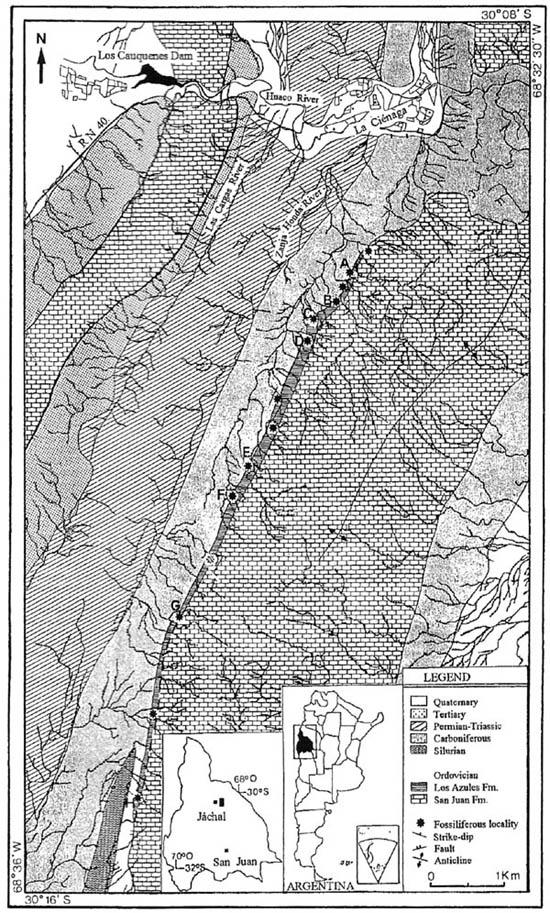
Figure 2. Geology of the Cerro Viejo area
(after Ottone et al., 1999).
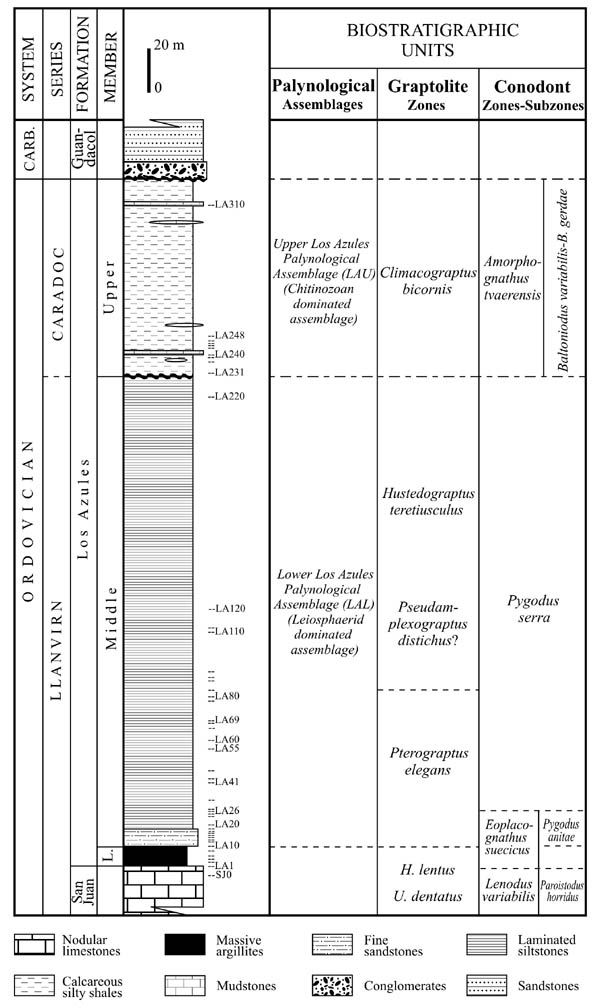
Figure 3. Composite stratigraphic column of
the Los Azules Formation and biostratigraphy (modified from Ottone et al.,
1999).
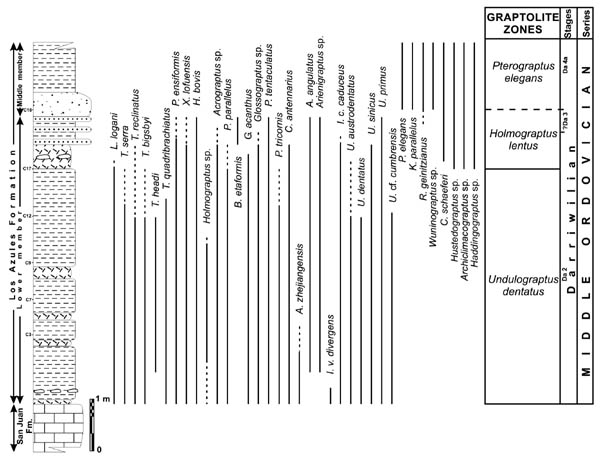
Figure 4. Graptolite ranges of the lower member
of the Los Azules Formation at Los Gatos Creek (after Ortega & Rickards,
2003
